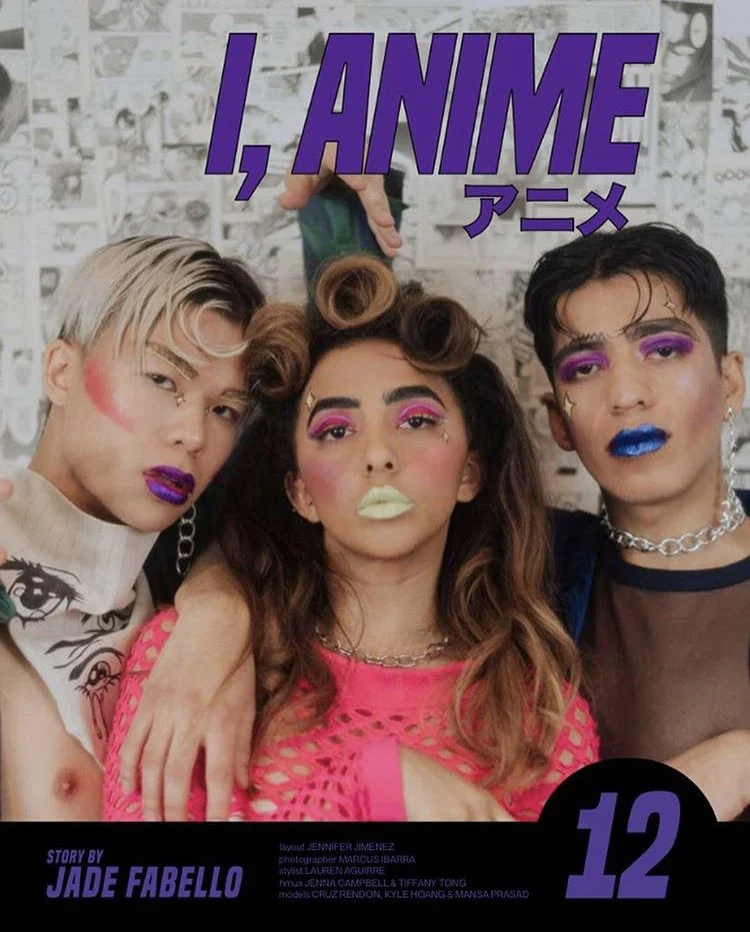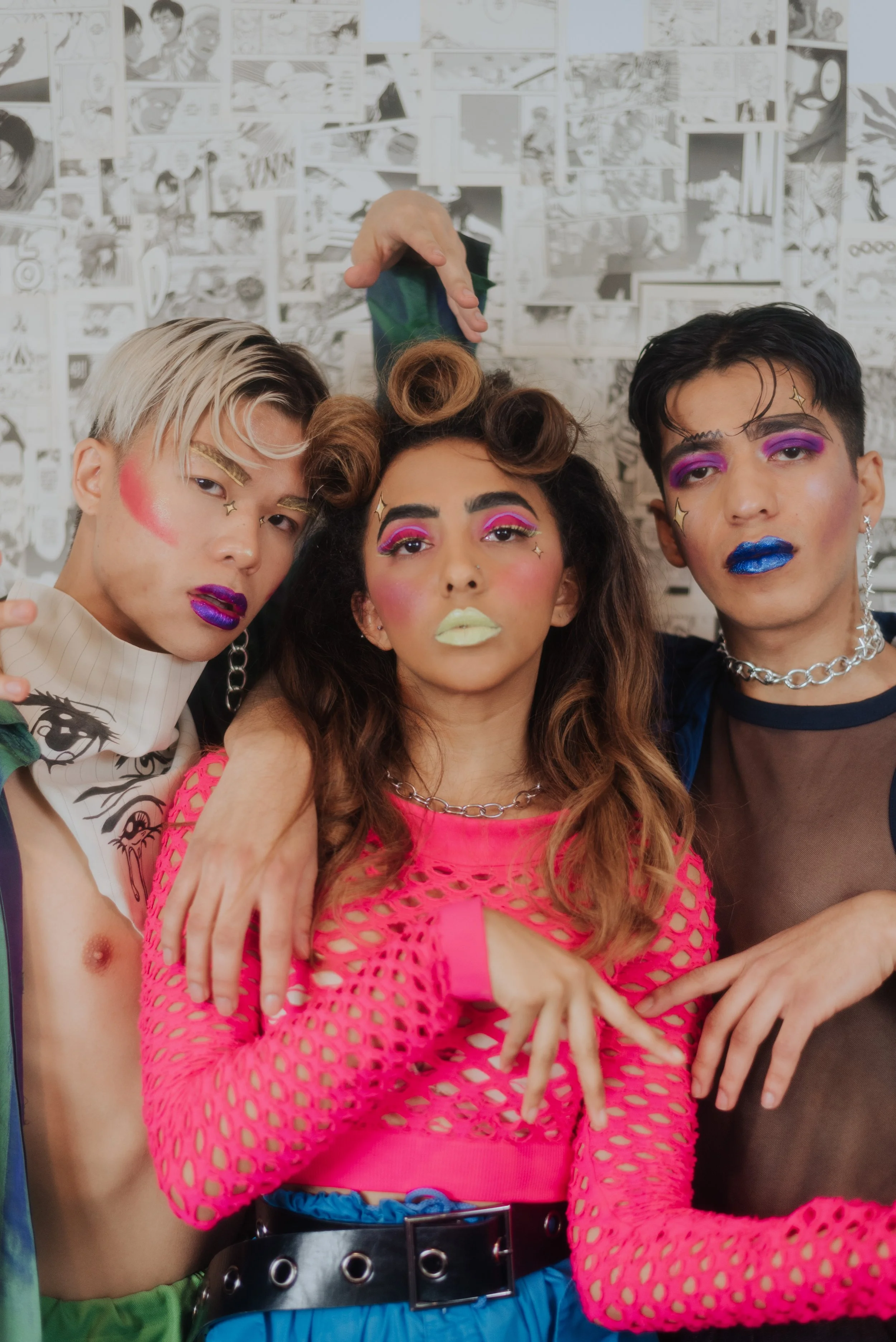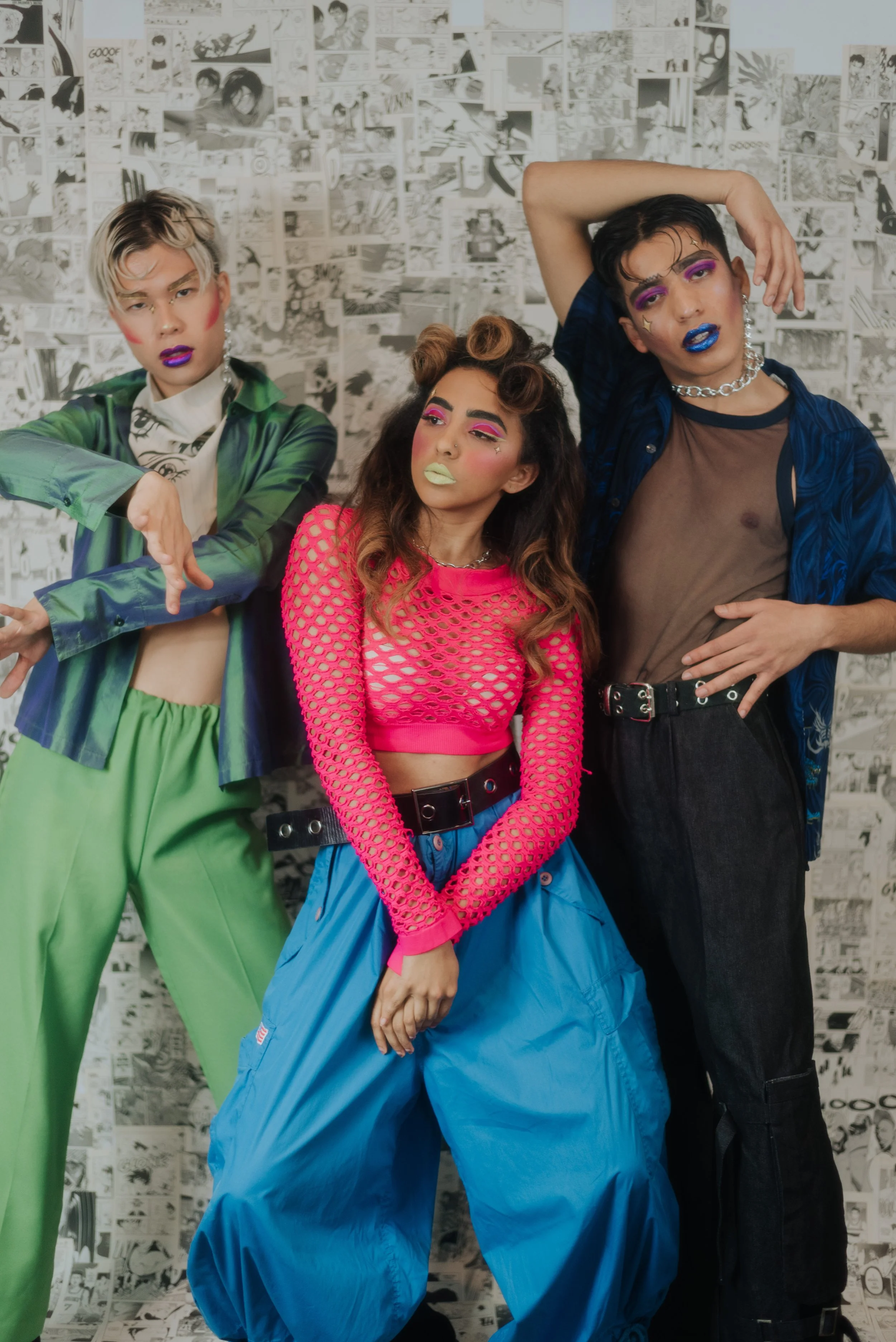
I, Anime
Anime (/ˈænɪmeɪ/) — A medium of typically Japanese animation spanning a variety of different genres and targeting various demographics. Its’ exact definition is a subject of much debate — reigning in conversations about Orientalism, elitism and Western condescension.
Manga (/ˈmæŋɡə/ ) — That but a book.
Archived: https://sparkmagazinetx.com/I-Anime
photographer: Marcus Ibarra
stylist: Lauren Aguirre
hmuas: Jenna Campbell and Tiffany Tong
models: Kyle Hoang, Mansa Prasad & Cruz Rendon
By: Jade Fabello | Jun. 12 2019
This is a confession.
I love anime. You wouldn’t know that about me because generally, I know how to market myself.
But today, I am showing my hand. Anyone who has misfortuned across my creative work and enjoyed it, has been unwittingly affected by anime. I am a public speaker, writer and model. I’ve stood in front of elected officials and stealthily quoted “Mobile Fighter G Gundam.” Imagery from the long-running pirate anime “One Piece” is just one level deep in the poetry that got me into university. And I credit any success I have seen as a model to the off the wall poses of the beautifully drawn “Jojo’s Bizarre Adventure.”
Anime is my inspiration for most things.
And as of late, I’m leaning into it.
It is an unusual creative who would refuse to watch movies or listen to music. Anime is an artistic medium like any other. My affinity for it affords me access to a different set of narrative conventions — another set of tropes, archetypes and problematics to draw upon — completely separate from the American media imagination. The media of any country, whether it be anime, foreign-language films or literature — a creative misses out when they make no attempt to access the creative conceptions of another populous.
When I was young, my aunt Joy was living in Japan and sent toddler-me a VHS of “My Neighbor Totoro” and the first Pokémon movie. “Totoro” is a beautiful story about two young girls encountering a fantastical cat creature as they cope with their mother's illness. And the first Pokémon movie is about Pokémon.
I had only recently learned object permanence and my cognitive abilities were not all too high, in general. But the lush hand-drawn images of both films burned into my memory. I rewatched those tapes constantly throughout my childhood. They didn’t have subtitles so I never understood a word they were saying. But the stories reached me, easily. And they did so on colorfully expressed emotion alone. My sensibilities for narrative were born here.
The first stories I heard in my own language were from my mother. And they were not nearly as whimsical. They broke news of personal tragedy, of loss and pain. At separate times, she had to tell me of my father’s imprisonment and my step-father’s death. Two fathers left my life, but tears never permanently tarnished my soul, because ma’s stories taught me to know pain and go on. The words that ring in my head are from when she knelt down and somehow delivered tragedy with a loving embrace. As if to say, “There may not be a silver lining here, but that is okay too.” The stories I am attuned to are of beautiful struggle. Not the stories of martyrs, but of doing what you can for those you love as hardship inevitably arrives.
The place I see that narrative play out the most is in anime. There is a drama and vibrancy to anime and the manga books they are based on. The emotions are loud, evocative and often hyper-stylized. The heroes struggle in blazing color and eye-roll inducing posturing. And usually, they win. But the weight and tension behind these encounters make them visceral experiences.
I witness these moments of emotional intensity and have the desire to replicate the feelings in my work. The panels and stills of the mediums construct the building blocks of my imagination.
And these sensations don’t come in the exact same frequency in any other media I consume.
I am a Black-Filipino American. Most anime characters I have happened upon do not look like me. But there is a racial ambiguity (albeit generally light-skinned) to the invented worlds of many anime. The connection I felt to anime characters growing up gave me a hint of what it would be like to actually see myself represented in the Black-led American releases “Black Panther” and “Spider-Man: Into the Spider-verse.”
But any representation you see after you reach voting age doesn’t count as much. Growing up, the protagonists of shōnen manga (meaning young person’s comic) were my best bet.
The heroes of these stories are young, idealistic and naive. I saw myself in their tragic backstories or circumstances. But it was their ability to change their situation that drew me most. They could stop further pain by wrapping their fist with energy and loudly defying forces that would do their people harm.
They achieved victory with flair.
Occasionally an anime would frustrate me with its oversimplification of conflict. Some stories matured with me, trading out simple good and evil paradigms for nuanced and heartbreaking moral dilemmas. But even when they stay juvenile and silly, they reach me.
I’m a jaded person, overall. I’ve been watching the news and engaging with the world for as long as I have been reading manga. Tragedy I have observed intimately or as a politically inclined activist, paints part of my world in bleak grays. As a creative, when I share my words with audiences I rather emulate the colorful and fantastical over the more drab parts of my imagination.
As I’ve aged, the same naivety that was me or annoyed me, now endears me.
I am a political public speaker. At times of grave severity, I stand, pleading for social change. Genuine tears cross my eyes, but I crack an internal smile as I know, my planned mic drop moment is directly matched with a moment from season 1 episode 9 of “Attack on Titan.” I connect grim realities with brilliant (animated) hope.
Yes, other sources inspire me. But it's humorous in its own right that Anime Character Y neighbors the great Malcolm X in my mind.
My imagination isn’t fully 2-D and cell shaded. But the vibrant colors and striking action of this art that I love codes my interactions. When I listen to my favorite songs, my life choreographs to the tempo of an anime’s opening credits.
As a further confession to those I know best — my friends, I think about you in terms of your character designs and role in these anime archetypes. As I walk to class, I assign you anime-style powers and pit you against each other in friendly (and sometimes dire) skirmishes. Maybe you can transform into a dog, or stop time — the powers I assign are not equally distributed — but to me, you are not only you, but the most extreme and fantastical version of you.
I do the same for myself. This is where I live as a creative — in a realm of color, flair and hope surrounding my more somber inventions.
At the risk of losing my competitive edge as a creative in my local community — I tell my peers, anime can be an overlooked mine of inspiration. The intensity of emotion, the thematics, the wild application of powers, the hope — they are my greatest source of artistry.
Find inspiration where you can. I’ve found it in colorful flurries of punches and a set of starry-eyed idealists. Some stories are meant to reach you.
I love anime, and I am leaning into it these days.
In sum, watch anime, you cowards. ■
by: Jade Fabello
photographer: Marcus Ibarra
stylist: Lauren Aguirre
hmuas: Jenna Campbell and Tiffany Tong
models: Kyle Hoang, Mansa Prasad & Cruz Rendon




